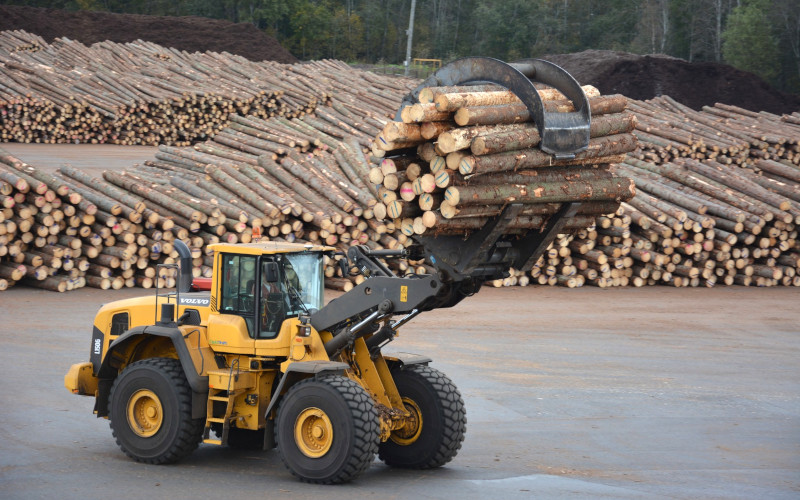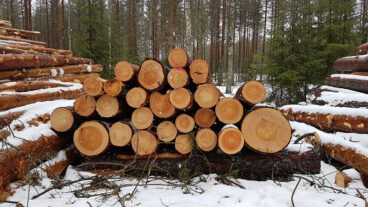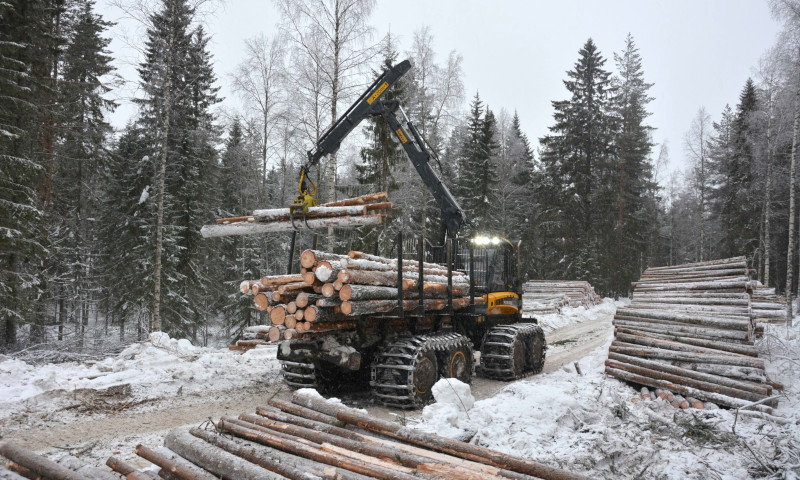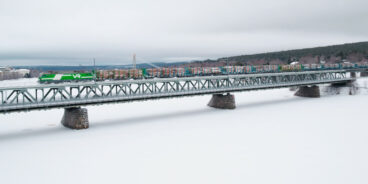Timber Sales

Metsähallitus sells approx. 6 million cubic metres of timber annually. This is about 5 to 10% of the timber volume required by the Finnish forest industry. The largest customers are major Finnish forest industry companies that produce pulp, paper and sawn goods. Metsähallitus supplies timber to more than one hundred points of delivery in total but has no wood processing operations of its own.
Metsähallitus Forestry’s main products are pulpwood (approx. 60% of the total timber volume) and sawlogs. In addition, stumps, logging residues and small-diameter wood are sold to power plants. The products are always delivered as a turnkey service, meeting the customer’s requirements related to dimensions and quality. This means that the price of timber always includes environmental responsibility and delivery to the requested location.

Metsähallitus sells timber twice a year.
A significant part of the timber is sold under general multi-year contracts concluded individually with key customers. These contracts can cover extremely long periods as the planning systems provide information on the quality, quantity and location of future harvest volumes. This way the customer can rely on a steady supply of wood, even throughout the year if necessary.
Even though the timber is primarily sold under long-term contracts, suitable lots are also available for occasional customers.
Part of the sawlogs are sold using a sales catalogue issued twice a year. The catalogue includes regional listings of sawlog lots for which prospective buyers can make bids.
Metsähallitus’ forests are certified under the international PEFC system. The certificate proves that the timber was grown in compliance with sound forest management criteria. In addition to forest certification, Metsähallitus is committed to complying with the requirements of the chain-of-custody management, which makes it possible to reliably trace the timber coming from certified forests all the way back to the source forest.
Harvesting and delivery

In state-owned commercial forests, timber harvesting and transportation are carried out by private contractors operating forest machines and timber lorries. Our timber is transported by haulage contractors. The total number of contractors and their employees working in Metsähallitus’ forests is more than one thousand.
Nationwide,
about two thirds of Metsähallitus timber is transported by lorry to the mill. Around
30% of the timber is transported by rail, and a few per cent is floated.
The journey of timber from the forest to the mills is managed using
sophisticated information systems which must work in the office and on
harvesters and timber lorries alike.
Harvesting instructions are sent to the harvester’s on-board computer, giving the operator access to all the important information about the site: location, stand data, environmental guidelines as well as dimension and quality requirements.
Information on completed fellings is automatically transferred from the harvester to the enterprise resource planning (ERP) system used by transportation supervisors to prepare haulage instructions for timber lorries. The instructions tell the driver which landing to pick up the timber from, what to load, where to deliver the load and when it needs to be with the customer.
The data on delivered timber volumes is returned from trucks or grading stations to the ERP system, making it possible to monitor how well delivery targets have been achieved.
The quality of both timber harvesting and deliveries is monitored regularly. The monitoring of harvesting quality focuses on the quality of harvester contractors’ work. In the quality control of deliveries, the buyer’s measurements are compared to a control measurement carried out by Metsähallitus.
Developing timber transport to reduce emissions

Metsähallitus is Finland’s second largest road maintainer and the largest trader in timber. Efficient transport is important for us, our customers and the environment alike. We work actively to improve the efficiency of transport and to reduce its carbon footprint. One important way of reducing emissions is increasing the size of loads carried by trucks and trains.
We have participated in trials of using various trucks and trains with a large payload. In road transport, they are known as High Capacity Transport (HCT) trials, and on rail this concept is called Longer and Heavier Trains (LHTs). The purpose of the trials is to find cost-effective and environmentally friendly solutions for transporting timber without compromising on safety.
The trials have succeeded in increasing the load size on rail by a quarter (from 22 to 27 wagons). In 2019, longer trains were introduced as a permanent part of operations in Northern Finland. The possibilities of using higher and wider wagons are currently being investigated.
We monitor the emissions generated from harvesting and delivering timber to our customers. The total emissions from timber harvesting and transport have declined at an average annual rate of two percentage points in recent years. The monitoring data from 2019 shows that each cubic metre of timber supplied to customers generated 11.73 kg/m3 of carbon dioxide emissions (in 2018, 13,04 kg/m3).
The emissions from both transport and harvesting have been cut, and the productivity of harvesting has improved strongly. New machines also have lower-emission engines compliant with EU requirements. While engine technology has also advanced in timber transport, the greatest reduction in emissions has been achieved by increasing the load size on both trucks and trains.
Energy wood
Following environmental instructions, deadwood is not harvested.
Logging residues for energy use are harvested on site where this is profitable. The criteria include demand, sufficient volume and such ecological factors as the nutrient status. Nutrient drain is prevented by delimbing thinning wood and by restricting residue harvesting to areas where studies prove it not to be harmful. At least a third of the residue is always left on the site.
Metsähallitus harvests energy wood in connection with other logging, collectively known as integrated harvesting. As the use of energy wood increases, today there is also a demand for wood obtained from first-thinning sites.
Forest biomass includes residues, whole trees, small-diameter stemwood and stumps. Small-diameter stemwood may contain minor amounts of timber suitable for pulpwood and sawlogs, which are harvested if this makes it possible to get a better margin on the wood through higher price or lower costs.
Forest biomass is sold and delivered to regular business partners. It is supplied to power plants either as ready-made chips or as stems and tops. Some biomass lots for sale are announced in the sales catalogue issued once a year. These lots are sold based on bids, and the wood is delivered either to the power plant or to the roadside, in which case the buyer will be responsible for chipping and transportation. Metsähallitus normally deals in wood-based energy by the megawatt hour.
Forest biomass is sold after a minimum of one drying season. Trees and stumps are dried either in the forest or on the roadside. If the moisture content of the biomass is 40%, one tonne will yield some 3 Mwh of energy. At a moisture content of 25%, one tonne gives nearly 4 Mwh, but if the wood has become wet or the load contains snow and ice, the yield may be as low as 1.5 Mwh/t.